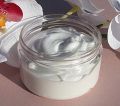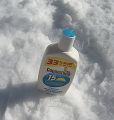Skincare By Season
Winter Skincare:

A seasonal drop in the temperature can often rob you of that glowing tan and silky sheen you were so proud of in summer. The cold winter air, low humidity levels coupled with stale indoor and airconditioning give your skin no respite. It’s no surprise, every year you cringe at the touch of your parched skin, chapped, torn lips and rough heels. If you want to hold onto your fab summer skin, it is important to counter the change in climate with a change in your beauty and skincare routine.

Make Moisturiser Your Friend:
During summer, there is heat, humidity, sweat…which helps heep the skin moist. In winter, temperatures go down and the skin tends to become dry. So, yes, your skincare routine has to change to adapt to the climate. Switch to a thicker, creamier moisturiser than the one you normally use, especially if you have dry or normal skin. Daily use of a moisturising day cream with SPF, followed by a deep nourishing night cream, should keep your skin supple even in the chill.
Tip: As soon as you step out of your warm bath, gently pat yourself dry and massage in a nourishing body moisturiser or oil while your skin is still moist. Doing this will help seal in the moisture.

Don’t Forget Sunscreen:
Winter sun can be unkind, especially when you step out minus any sun protection. There is a common misconception that the sun in winter is less hot and not so harsh on your skin. Hence, sun protection is ignored in winter. But the truth is that both in summer and winter the sun’s UV content remains the same. Failing to moisturise your skin as often as required will leave you with a lifeless grey complexion with fine lines, leading to the appearance of premature wrinkles. Moreover, exposing your skin to the direct glare of the sun’s rays in winter often leads to skin conditions like polymorphic light eruption, sclerosis or dryness. Skin problems like psoriasis and atopic dermatisis usually get aggravated in winter.
Tip: Do not neglect to put on sunscreen of at least SPF 15+, which is sufficient protection for darker skin that doesn’t need a stronger SPF, like paler skin. However, products with SPF 20+ and SPF 30+ are also available in the markets.

Swap Your Favourite Products:
In summer, your skin is at it’s oiliest, and just when you’ve mastered the art of controlling the extra sebum secretion, it’s winter and you have to change your skincare routine all together. This calls for a change of beauty products. While a gel-based foaming cleanser may have worked in summer, a creamy moisturising cleanser might be better suited for the colder months. It all depends on your skin type. Similarly, if you have dry/normal skin, a light matte moisturiser might not be enough in winter, and you may have to switch to a heavier day cream.
Tip: If you haven’t figured out what’s your skin type, a quick visit to the dermatologist might be useful. A doctor would also be able to recommend the right products for your skin.

Kiss Cracks Goodbye:
Prevention is better than cure. So, don’t wait for cracks and tears to appear, before you reach for your lip balm or foot cream. Liberally apply a lip balm with SPF 15+ daily. And if your pout tends to dry quickly, reapply as many times as required. On the other hand, a warm foot bath once a week, regular pedicures and plenty of vaseline applied nightly, should keep your feet smooth and pretty.
Tip: After you’ve moisturised your feet after a bath, pull on a pair of thick, fluffy socks and keep them on all night. Your feet will feel softer and look younger the next morning.

Buff That Body:
Simply smearing on more moisturiser or cold cream isn’t going to improve your complexion. You need to exfoliate your skin as well. Regular exfoliation will rid the skin of dead cells and allow it to breathe. It will also unclog the pores and permit easy absorption of moisture. The cold weather makes your skin drier and, as a result, more dead skin cells are found on dehydrated skin. The build-up of dead skin cells dulls the complexion by making your skin appear botchy and uneven. You can physically exfoliate your body by using a natural loofah, a granular body scrub, a body brush or washcloth. But be careful not to over exfoliate. Especially, if your skin isn’t well moisturised, as exfoliating dry skin will only irritate it further and leave it drier than before. Experts recommend exfoliating your face once a week if you have an oily or combination skin type. If your complexion is scaly and coarse, your dermatologist could suggest something extra effective, like a hydrating lactic or chemical peel, which will give you immediate radiant results.
Tip: Remember, when it comes to exfoliation, less is more. As exfoliating can leave your skin feeling raw and exposed, don’t forget to moisturise immediately after.